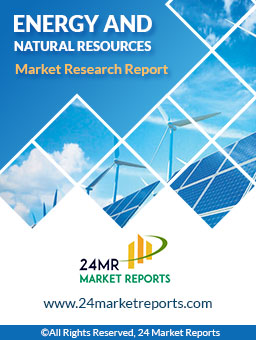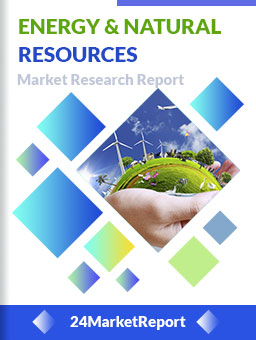
Download FREE Report Sample
Download Free sampleMARKET INSIGHTS
Global subsea umbilical cables market was valued at USD 1,668 million in 2024 and is projected to grow from USD 1,928 million in 2025 to USD 4,552 million by 2032, exhibiting a CAGR of 15.8% during the forecast period.
Subsea umbilical cables are composite cables that serve as critical infrastructure connecting subsea production systems with surface facilities. These high-performance cables integrate multiple functions including hydraulic power transmission, chemical injection, electrical power distribution, and fiber optic communications. The industry categorizes them into three main types: steel tube umbilicals for high-pressure applications, thermoplastic hoses for flexible deepwater deployment, and power umbilicals specifically designed for electrical transmission.
The market expansion is primarily driven by increasing deepwater exploration activities, with over 60% of new oil discoveries occurring in offshore locations. Furthermore, the accelerating adoption of renewable energy solutions has created new demand vectors - offshore wind installations are projected to require approximately 8,000 km of dynamic subsea cables annually by 2025. Recent technological advancements in materials science have enabled manufacturers to develop umbilicals capable of withstanding water depths exceeding 3,000 meters while maintaining 25+ year operational lifespans.
Offshore Energy Expansion Accelerates Subsea Umbilical Cable Demand
The global push for energy security is driving unprecedented investments in offshore oil, gas, and renewable energy projects, creating substantial demand for subsea umbilical cables. Offshore oil production is projected to grow at approximately 4% annually through 2030, with deepwater projects accounting for over 50% of new hydrocarbon discoveries. These subsea operations require sophisticated umbilical systems for power transmission, chemical injection, and real-time monitoring. Deepwater projects below 1,500 meters now represent nearly 30% of all offshore developments, each requiring specialized high-pressure rated cables capable of withstanding extreme environmental conditions.
Wind Energy Sector Emerges as Key Growth Catalyst
To know more about market statistics, Download a FREE Sample copy
The offshore wind sector is undergoing exponential growth, with global capacity expected to triple from 35 GW in 2020 to over 110 GW by 2030. Each offshore wind turbine requires high-capacity dynamic umbilical cables for power transmission and control functions, with larger wind farms in the 500MW+ range utilizing complex inter-array cable networks. The transition to floating wind farms in water depths exceeding 60 meters is creating new technical requirements for cable systems, pushing manufacturers to develop more robust designs. Europe currently leads installations, but Asia-Pacific is forecast to account for 60% of new capacity additions through 2032.
Technological Advancements Enable New Applications
Recent breakthroughs in cable design and materials science are expanding the capabilities of subsea umbilicals. Composite cables integrating fiber optics for real-time monitoring now represent over 40% of new installations, allowing operators to gather critical data on flow rates, pressure, and equipment health. The development of high-temperature superconducting cables promises to revolutionize power transmission efficiency for subsea applications. Manufacturers are also implementing automated production techniques that can reduce lead times by 30-40% while maintaining stringent quality standards required for subsea deployment.
High Capital Requirements Limit Market Accessibility
Subsea umbilical cable systems represent one of the most capital-intensive components of offshore developments, with costs ranging from $5-15 million per kilometer for complex deepwater configurations. The specialized manufacturing facilities required for production involve investments exceeding $100 million, creating high barriers to entry. Project lead times averaging 18-24 months further compound financial pressures, particularly when oil prices experience volatility. Smaller operators in emerging markets often struggle to secure financing for these components, delaying exploration activities in frontier regions.
Technical Complexities Pose Installation Challenges
Subsea umbilicals must withstand extreme pressure differentials, corrosive seawater, and potential seabed movements while maintaining operational reliability for decades. Failure rates in ultra-deepwater installations exceed 2-3% annually, with repair costs ranging from $20-50 million per incident depending on water depth. The increasing integration of multiple functionalities (power, comms, chemicals) within single cables creates complex engineering challenges that require specialized expertise. Installation in areas with complex seabed topography or high currents often requires customized solutions that can add 20-30% to project budgets.
Regulatory Hurdles Slow Technology Adoption
Stringent certification requirements across different jurisdictions create compliance challenges for manufacturers. New materials and designs typically require 12-18 months for full certification, delaying deployment even after successful field testing. Environmental regulations governing seabed disturbances are becoming increasingly strict, particularly in environmentally sensitive areas. The lack of global standardization for subsea electrical systems forces manufacturers to maintain multiple product variants, increasing production complexity and inventory costs.
Aging Infrastructure Replacement Creates Sustained Demand
Approximately 40% of existing subsea umbilical systems in major offshore basins are approaching or exceeding their original 25-year design life. This creates a $12-15 billion replacement market opportunity through 2035, particularly in mature regions like the North Sea and Gulf of Mexico. Operators are increasingly opting for next-generation cables with enhanced monitoring capabilities during replacement projects, driving premium product demand. The integration of predictive maintenance technologies is enabling operators to optimize replacement schedules, creating steady demand rather than cyclical spikes.
Emerging Markets Present Untapped Potential
Frontier offshore markets in Africa and South America are expected to account for 35% of new umbilical installations by 2030, as operators explore previously inaccessible reserves. Governments in these regions are implementing local content requirements that create partnership opportunities for established manufacturers. The development of regional service hubs in strategic locations like Namibia and Guyana is reducing logistical challenges and enabling more cost-effective project execution. Manufacturers that establish early footholds in these markets can secure long-term service contracts worth hundreds of millions.
Energy Transition Drives Hybrid Solutions
The convergence of offshore oil, gas, and renewable energy infrastructure is creating demand for hybrid umbilical systems that can support multiple energy vectors. New projects are exploring shared subsea power grids that connect offshore wind farms with oil platforms, requiring innovative cable solutions. The emerging carbon capture and hydrogen sectors will likely require specialized umbilicals for subsea injection and transport systems. Manufacturers investing in multi-functional cable technologies today are positioned to lead this evolving market segment.
Supply Chain Vulnerabilities Impact Project Timelines
The specialized materials required for subsea cable production face periodic shortages that can delay projects by 6-12 months. High-grade steel tubes used in dynamic applications have seen lead times extend beyond 18 months during peak demand periods. The consolidation of key raw material suppliers has reduced market flexibility, with three suppliers controlling approximately 70% of certain critical components. Geopolitical factors continue to disrupt logistics networks, with some shipping routes experiencing 200-300% cost increases since 2020.
Strategic Workforce Shortages Constrain Expansion
The subsea cable industry faces a 20-25% deficit in qualified engineers and technical specialists, particularly for deepwater systems design. Experienced installation vessel crews command premium rates, adding 15-20% to project costs in competitive markets. The specialized nature of subsea engineering requires extensive training programs that take 3-5 years to produce fully qualified personnel. This skills gap is exacerbated by the retirement of experienced professionals who entered the industry during the 1980s offshore boom.
Technological Disruption Risks Stranded Assets
Rapid advancements in subsea wireless communication and autonomous systems could potentially reduce dependency on traditional umbilical architectures. Each 10% reduction in umbilical functionality requirements could eliminate $300-500 million in annual market value. Alternative energy storage solutions may decrease the need for long-distance subsea power transmission in some applications. Manufacturers must carefully balance investments in legacy technologies with development of next-generation solutions to avoid technological obsolescence.
Steel Tube Umbilical Cable Segment Dominates Due to High Durability in Deepwater Environments
The market is segmented based on type into:
Steel Tube Umbilical Cable
Subtypes: Hydraulic, electro-hydraulic, and others
Thermoplastic Hose Umbilical Cable
Power Umbilical Cable
Subtypes: Low voltage, medium voltage, and high voltage
Fiber Optic Umbilical Cable
Others
Deepwater Segment Leads Due to Increasing Offshore Oil & Gas Exploration
The market is segmented based on application into:
Shallow Water (Up to 500m depth)
Deepwater (500-1500m depth)
Ultra Deepwater (Below 1500m depth)
Electric Power Transmission Segment Shows Strong Growth
The market is segmented based on function into:
Electric Power Transmission
Hydraulic Power Transmission
Signal/Data Communication
Chemical Injection
Oil & Gas Sector Remains Primary Consumer
The market is segmented based on end-use industry into:
Oil & Gas
Offshore Wind Energy
Subsea Mining
Subsea Research
Market Leaders Accelerate Innovation to Capture Deepwater and Offshore Wind Opportunities
The global subsea umbilical cables market features a dynamic competitive landscape dominated by established cable manufacturers, oilfield service providers, and specialized umbilical producers. Nexans and Prysmian Group currently lead the market through their extensive manufacturing capabilities and long-term contracts with major energy companies. These European players have consolidated their positions through technological expertise in deepwater cable solutions, controlling nearly 35% of the global market share collectively in 2024.
Meanwhile, TechnipFMC and Aker Solutions have strengthened their positions through vertical integration, offering complete subsea systems that combine umbilicals with complementary equipment. Their ability to provide turnkey solutions has proven particularly valuable in complex deepwater projects where system compatibility is critical. Both companies have reported double-digit revenue growth in their subsea divisions over the past two years, reflecting robust demand.
The market also sees active participation from Asian manufacturers like Orient Cable and ZTT Cable, who are expanding beyond regional projects into international markets through competitive pricing and improved technical capabilities. While these players currently focus primarily on shallow water applications, several have announced R&D initiatives targeting deeper water deployments.
Consolidation has emerged as a notable trend, with five major acquisitions occurring in the industry since 2022. Larger firms are acquiring specialized umbilical manufacturers to bolster their product portfolios and shorten project delivery timelines. This strategy has become particularly important as operators demand increasingly complex solutions for harsh environments.
The global subsea umbilical cables market is experiencing robust growth, primarily fueled by increasing deepwater oil and gas exploration activities along with surging offshore wind energy projects. With over 60% of untapped hydrocarbon reserves located in deepwater and ultra-deepwater regions, energy companies are investing heavily in subsea infrastructure that requires advanced umbilical solutions. Simultaneously, the offshore wind sector is projected to expand at over 12% CAGR through 2030, creating parallel demand for power transmission and control cables. This dual-industry growth presents significant opportunities for umbilical cable manufacturers developing products capable of withstanding depths beyond 3,000 meters while maintaining reliable power and data transmission.
Technological Advancements in Cable Design
The industry is witnessing breakthrough innovations in composite umbilical cables that integrate multiple functionalities - hydraulic lines, fiber optics, and electrical conductors - into single streamlined solutions. Manufacturers are developing hybrid thermoplastic-electrical umbilicals with enhanced fatigue resistance and corrosion protection, extending operational lifespans beyond 25 years in harsh subsea environments. Recent product launches feature armored steel tube umbilicals capable of withstanding pressures exceeding 500 bar, while new distributed temperature sensing (DTS) fiber optic systems enable real-time monitoring across multi-kilometer subsea networks.
The economics of offshore energy production increasingly favor subsea tiebacks connecting new fields to existing infrastructure rather than building new platforms. This shift is generating demand for lean-profile dynamic umbilicals that reduce installation costs while maintaining full functionality. Over 40% of new offshore projects now utilize tieback architectures, creating opportunities for customized umbilical solutions that integrate with diverse subsea production equipment. Manufacturers are responding with modular designs allowing field-expandable capacity and simplified maintenance access points to reduce operational downtime.
North America
The North American market is driven by substantial offshore oil and gas activities in the Gulf of Mexico, where deepwater exploration projects demand high-performance subsea umbilical cables. The U.S. dominates the region, supported by investments in offshore energy infrastructure and technical advancements in subsea cable manufacturing. Regulatory frameworks, including stringent safety and environmental standards, further push the adoption of robust umbilical solutions. However, high operational costs and complex logistics in ultra-deepwater drilling remain challenges. With increasing offshore wind energy projects along the East Coast and government initiatives supporting marine energy, the market is witnessing diversified growth beyond traditional hydrocarbons.
Europe
Europe maintains a strong position in the subsea umbilical cables market due to active offshore wind developments in the North Sea and ongoing oil and gas projects in the Norwegian Continental Shelf. Countries like Norway and the UK lead in innovation, focusing on high-voltage and fiber-optic integrated umbilical solutions. The region benefits from strict EU regulations promoting sustainable subsea technologies, driving demand for corrosion-resistant and eco-friendly cable designs. Nonetheless, high competition among established players and the gradual shift toward renewable energy impact traditional oil and gas-related investments. Collaborative R&D efforts among industry leaders and academic institutions further reinforce technological leadership in this space.
Asia-Pacific
Asia-Pacific is the fastest-growing market, propelled by expanding offshore exploration in Southeast Asia and deepwater projects in Australia. China and India are key contributors due to rising energy demands and government-backed offshore initiatives. The region’s cost competitiveness has made it a hub for manufacturing subsea umbilicals, yet quality standardization remains inconsistent across emerging players. Local production capabilities in Japan and South Korea support high-value cable exports, particularly for the LNG sector. While shallow-water applications dominate, ultra-deepwater developments in regions like the South China Sea present untapped potential, albeit with geopolitical complexities influencing project timelines.
South America
Brazil drives the South American market, with its prolific pre-salt oil reserves demanding advanced subsea umbilical solutions for deepwater extraction. The country’s national oil company has spearheaded large-scale projects, attracting global suppliers. However, economic instability and bureaucratic hurdles often delay investments, affecting market growth. Argentina and Guyana are emerging as promising markets, though infrastructure limitations and political risks temper rapid expansion. Despite these challenges, regional partnerships and technological transfers from North American and European firms are gradually enhancing local capabilities. The focus remains on cost-efficient solutions tailored to harsh marine environments.
Middle East & Africa
The Middle East shows steady growth, particularly in the Gulf Cooperation Council (GCC) countries, where offshore gas fields and subsea tie-backs to existing infrastructure drive umbilical demand. Saudi Arabia and the UAE are investing in domestic manufacturing to reduce import reliance. In Africa, deepwater projects in Angola, Nigeria, and Mozambique face funding constraints but offer long-term opportunities due to untapped reserves. Political volatility and underdeveloped supply chains hinder progress, though international oil companies continue to prioritize high-potential regions where subsea umbilicals ensure operational efficiency. Local content policies in countries like Nigeria aim to foster industry participation, but execution challenges persist.
This market research report offers a holistic overview of global and regional markets for the forecast period 2025–2032. It presents accurate and actionable insights based on a blend of primary and secondary research.
✅ Market Overview
Global and regional market size (historical & forecast)
Growth trends and value/volume projections
✅ Segmentation Analysis
By product type or category
By application or usage area
By end-user industry
By distribution channel (if applicable)
✅ Regional Insights
North America, Europe, Asia-Pacific, Latin America, Middle East & Africa
Country-level data for key markets
✅ Competitive Landscape
Company profiles and market share analysis
Key strategies: M&A, partnerships, expansions
Product portfolio and pricing strategies
✅ Technology & Innovation
Emerging technologies and R&D trends
Automation, digitalization, sustainability initiatives
Impact of AI, IoT, or other disruptors (where applicable)
✅ Market Dynamics
Key drivers supporting market growth
Restraints and potential risk factors
Supply chain trends and challenges
✅ Opportunities & Recommendations
High-growth segments
Investment hotspots
Strategic suggestions for stakeholders
✅ Stakeholder Insights
Target audience includes manufacturers, suppliers, distributors, investors, regulators, and policymakers
-> Key players include Nexans, Oceaneering, Aker Solutions, TechnipFMC, Prysmian Group, JDR Cable Systems (TFKable), and Umbilicals International (Champlain Cable), among others.
-> Key growth drivers include rising offshore oil & gas exploration, deepwater production activities, expansion of offshore wind energy, and technological advancements in subsea cable systems.
-> Europe currently leads in market share, while Asia-Pacific is expected to witness the highest growth rate due to increasing offshore energy projects.
-> Emerging trends include development of high-voltage power umbilicals, integration of fiber-optic monitoring systems, and adoption of lightweight composite materials for enhanced performance.

Speak to our Custom Research Team and get the Custom Research in a budget
Custom ResearchFrequently Asked Questions ?
A license granted to one user. Rules or conditions might be applied for e.g. the use of electric files (PDFs) or printings, depending on product.
A license granted to multiple users.
A license granted to a single business site/establishment.
A license granted to all employees within organisation access to the product.
Upto Working 24 to 48 hrs
Upto 72 hrs max - Weekends and Public Holidays
Online Payments with PayPal and CCavenue
Wire Transfer/Bank Transfer
Hard Copy




 Industry Market Size
Industry Market Size SWOT Analysis
SWOT Analysis Industry Major Players
Industry Major Players Revenue Forecasts
Revenue Forecasts Historical and Forecast Growth
Historical and Forecast Growth Profitability Analysis
Profitability Analysis
























